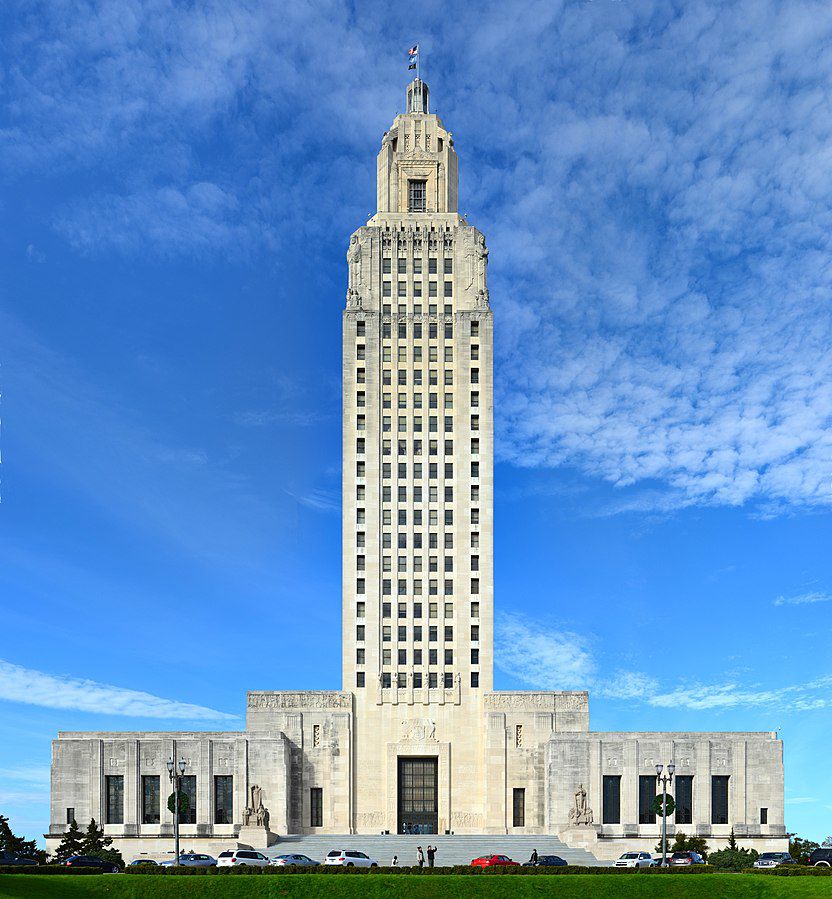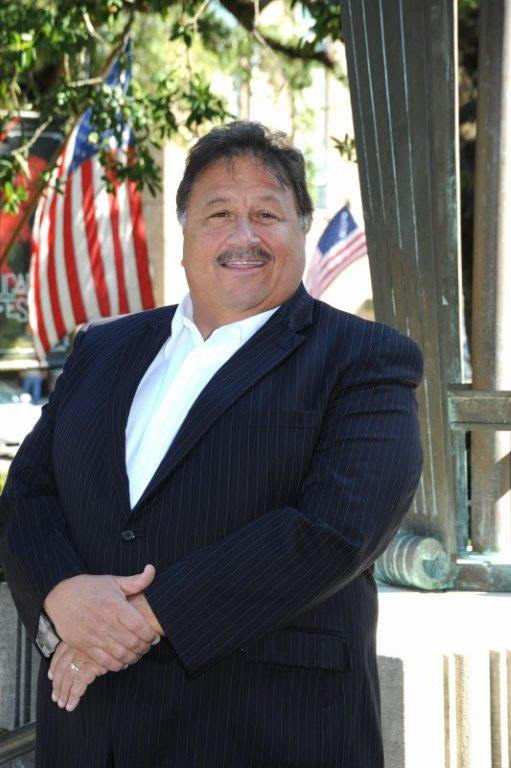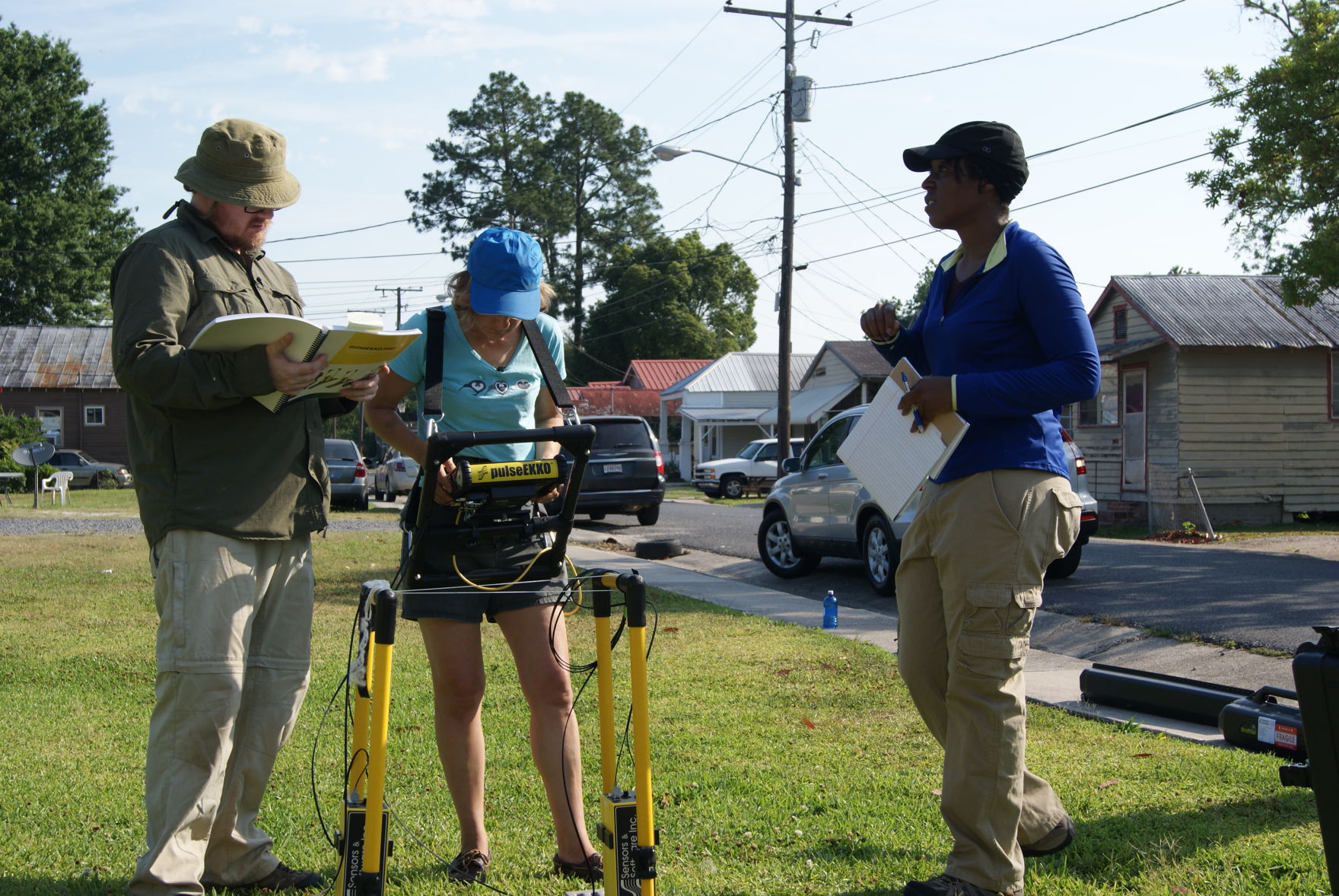
Top doc says quit pretending
May 23, 2018
Recreation woes: The focus shifts from Rec. 2-3 to Rec. 11
May 23, 2018Members of a local veteran’s organization, journalists, police officers, a barber and a priest, were among those who watched as scientists collected data on an open lot behind an American legion hall, last Thursday.
The site, lot behind the Raymond Stafford Post 513 American Legion Hall, is suspected to harbor a mass grave from a racial atrocity that occurred 130 years ago.
“Past generations, they always point to this section over here. I hope they find something,” Sylvester Jackson. Nodding his head as he gazed at the field, he then repeated in a lower tone, “I hope they find something.”
86-year-old Sylvester Jackson, of Thibodaux, is the great grandson of Jack Conrad, who was gravely injured during the attacks and lived to tell the tale. Conrad’s son 19-year-old Grant Conrad was killed in what is now known as the Thibodaux Massacre of 1887.
On November 23rd, 1887 white mobs shot and killed black residents of Thibodaux in relation to a month-long strike of sugar cane laborers, that threatened to cripple the local economy. Plantations throughout Terrebonne and Lafourche were rendered idol and strikers sought shelter and sustenance from friendly residents of Thibodaux. The estimates of how many were killed run between 30 and 60 but no one knows for sure.
Sylvester Jackson is hoping for remains to be found, so that he can have closure. He intends to give Grant Conrad, his uncle, a proper burial. He already has a tomb set up 2 blocks away owned by Allen Chapel AME Church.
Jackson joined in with the small groups forming along the street, patiently waiting to see what might be found by the scientists working in the open field.
Everyone gathered for a short prayer before the work got underway. The Rev. Msgr. Cletus Egbi held his hand high as he prayed for the success of the project, and for racial healing in the community. The crowd remained silent as Egbi shook a vial of holy water.
After their blessing, the scientists slowly and meticulously gathered data from the field.
Dr. Ryan Gallacher held two yellow ground penetrating radar instruments on each side of him, as if skiing, as he inched along a tape measure which was stretched across the open field with Dr. Cindy Ebinger close in tow. Both were members of Tulane’s Earth Environmental Sciences Department.
As the two shuffled across the field Gallacher’s Scottish accent could be heard echoing the word “point!” This signaled to Ebinger that the GPR was in place and ready to be fired.
According to Ebinger, the ground penetrating radar sends out light waves, outside of the visible light spectrum, through the ground. These waves bounce back and the time it takes for this signal to return allows for mapping of the subsurface. The formula used for this is: Rate x Time = Distance
“We’re trying to do is make images,” said Ebinger. “So, what we’ll do is make a map of features that we’re seeing in the subsurface.”
Gallacher, a postdoctoral fellow assisting Ebinger and building field experience, then added:
“It’s somewhat similar to an ultrasound. It’s that idea of trying to make an image based on the timing it takes to get back,” he said. “One of the problems that we have is the fact that lots of different materials could have similar amounts of time taken to go through them depending on the state that they are in.”
They made another sweep and stopped at the corner of the field in the shade to cool off and look over some images.
“This is time for the signal to return… the time can be converted to a distance, or a depth below the surface,” Ebinger said tilting a colored monitor hanging from her shoulders. “So that’s giving me approximately … three meters below the surface. In the upper most couple of meters you can see a lot of disruption in these soil layers, and here in these amounts it’s what we call a diffraction.”
Ebinger pointed to an area on the screen where the red, blue, and green colors were visibly changed:
“Look,” she said pointing at the radar screen. “There’s a step down into a deeper area, and then it steps down even more and then it starts to come back up. So, there’s a pit down in through here. There’s a drop in the soil and so there’s some kind of hole, but we’re going to keep making more of these measurements. What we want to see is more of the same features and then we can get an idea of the dimensions.”
All of this data was being gathered so that one woman could interpret the findings.
This woman, Davette Gadison, is working on her PhD in Forensic Anthropology. Although she expects it to take at least two years to complete, her experience in the field is respected. Her dissertation involves global investigation on the processes that forensic teams use in cases of civil war conflict.
She was just in Somaliland in March. She was there a month working with a Peruvian forensic team unearthing numerous mass graves.
“What Davette is doing with the pink flags,” Ebinger said pointing at Gadison placing markers on the field. “That will give us an idea of the dimensions of the structures in the subsurface, and that gives, by the sizes, her a better idea of well could that be the burial site. Is this more like a dump, would this potentially be a burial pit? She has to do some research and take some decisions about what she does next, but we are just going to try to get her as much information as possible.”
Gadison explained that acidic soil, disturbances such as digging, and rain can cause break down of remains. She said that she heard Louisiana soil is acidic, but her work in the US had been limited to border crossing deaths, so she didn’t know what to expect.
“So, what I understand is that here the soil is pretty acidic. I’m really not sure what to expect, because I haven’t done this work in Louisiana,” said Davette. “The work that I’ve done in the US is more border crossing deaths in Texas.”
She’s referring to January, when Davette applied her skills at a cemetery and looked for unidentified individuals. She said the man burying the bodies didn’t use a log and relied on his memory.
“Those people were recently dead and so they were decomposing,” said Davette. “You could smell it.”
Back along the streets, members of the neighboring community spoke among themselves to pass the time. One man stood quietly and alone on the sidewalk. His posture was that which can only be earned of years of service.
Charles Mosley, a member of the Advisory Board of 1887, and Army veteran of the Korean War was patiently waiting to see results.
“I’m just interested in seeing all of this through, to see if there’s anything further that can be found,” he said. “There’s so much history that’s hidden on purpose, ignored and hidden on purpose.”
A short walk from Mosley was another member of the surrounding community, Irvin Jones. Jones, 73, and Vietnam veteran, is a local barber who has been cutting hair for about 35 years.
According to Jones, the plot of land used to be a garbage dump, and bulldozers used to push all the trash to the center, and they even used to burn the trash on site. Jones thinks the dump closed in the 60’s.
He also explained that the land was used for oil for a time, “I don’t know for certain that they discovered oil on the property or not, but I know that they had the rig right there in the center.”
Jones said that Gerald Peltier, a councilman, was instrumental in getting the American Legion Hall the property on which is resides.
As the scientists worked, the heat bore down. The onlookers congregated in areas of shade for reprieve.
“I think we found the melting temperature of a Scotsman,” said Gallacher, panting as he took a break from scanning.
Gallacher was speaking to John DeSantis, the author responsible for drawing this eclectic bunch together. DeSantis is also Senior Staff Write at The Times.
When asked, DeSantis mentioned a feeling of responsibility that came with writing the book, “The Thibodaux Massacre: Racial Violence and the 1887 sugarcane labor strike” (History Press, Charleston SC, 2016).
He said the book divulged unpleasant facts that many were unaware of. To avoid any upheaval, DeSantis sought one activity which all members of the community would agree upon: providing these souls a proper and respectful burial.
“I pulled the scab off,” said DeSantis. “I am responsible for making sure that the salve and the bandage are in place.”
To this respect, DeSantis put together an advisory board from many walks of life and talked with them about what they would like to do. They formed a non-profit which enlisted the help of University of Louisiana Lafayette. ULL then reached out to Tulane University.
“There’s a spiritual dimension to this that’s just telling me we’re doing something right,” said DeSantis. “Spirituality has to do with faith in things we don’t see, and it has to do with that feeling you get in your gut. Spirit is feeling … that one can be righting a wrong.”
DeSantis explained that opportunities arose that he never imagined, pieces of the puzzle kept falling into place, and eventually it led to finding the words of those who experienced the tragedy first hand.
“That’s the message I suppose. And the words that have helped shape the narrative of what has occurred here, are words that come directly from people of that time that we were able to find,” DeSantis said. “I see that as, and different people would call it different things, the dead will speak when they are ready to speak.”














